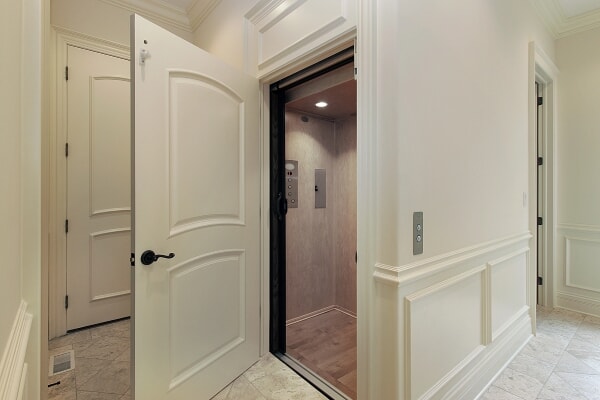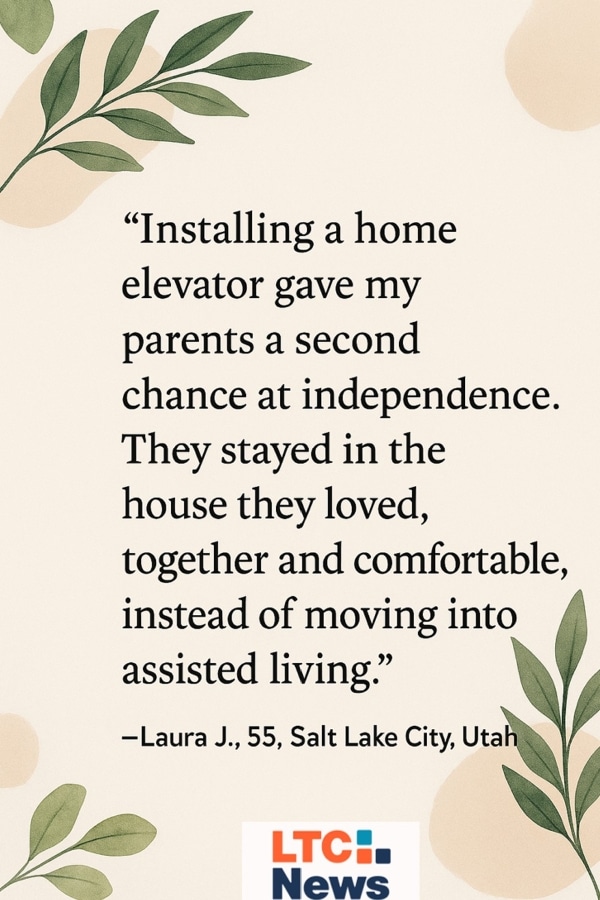Future-Proofing Homes: Installing Elevators Help Older Adults Age in Place

You may not think twice about climbing the stairs today, but as you age, those same steps can become a daily obstacle. For many older adults, stairs are a leading cause of falls and injuries. In fact, the CDC reports that more than one in four adults over 65 experiences a fall each year, and stairs are a frequent culprit. Many of these falls lead to a need for long-term care, often in a facility.
That’s why some homeowners are considering adding elevators to their houses—not just as a luxury, but as a way to make daily life safer and easier. Whether you live in a mountain home in Utah, a townhouse in New Jersey, or a multi-level suburban home in Texas, elevators are increasingly viewed as a smart way to stay in control while aging in place.
Why Elevators Matter for Aging in Place
For older adults, independence is often tied to mobility. Home elevators in Utah, New Jersey, Texas, or wherever you live can mean the difference between living comfortably in your own house or feeling forced to move.
Here’s how they help:
- Reduce fall risk: No more climbing stairs when balance, arthritis, or fatigue makes it risky.
- Preserve independence: You can access every floor without needing someone else’s help.
- Support caregivers: Family members or aides can transport groceries, laundry, or even medical equipment without the physical strain of stairs.
- Ease recovery: After surgery or illness, an elevator helps you navigate home without being confined to one floor.
Falls are one of the biggest reasons older adults lose independence. Anything that reduces that risk can extend the time people safely remain at home. Karion Gray-Waites, DNP, a physical medicine and rehab provider in the University of Alabama at Birmingham Falls Clinic, says that older adults want to be able to stay at home as long as they can by themselves.
Fortunately, there is technology available today that can help them maintain their independence, while also keeping them safe. If an individual falls one time and they do not take steps to prevent themselves from falling again within six months, they are most likely going to fall again. — Karion Gray-Waites, DNP.
Why Home May Be Better Than Assisted Living
For many families, moving into assisted living feels like the default option when health begins to decline. But it isn’t always the preferred choice. Staying at home often provides:
- Familiar surroundings: Remaining in your own home helps reduce stress, confusion, and depression, especially for people living with dementia.
- Personal control: You set your own routines, meals, and schedules instead of adapting to a facility’s structure.
- Emotional comfort: Being close to family, pets, and neighbors nurtures a sense of belonging and security.
Whether combined with professional home care providers or not, a home elevator can make multi-level living not only possible but practical. However, a caregiver can assist with meals, bathing, or medication while the elevator eliminates the physical barrier of stairs. This pairing allows many older adults with chronic conditions—such as Parkinson’s, heart disease, or arthritis—to maintain independence in the home they love.
The LTC News Caregiver Directory makes it easier for families to find licensed in-home care providers nationwide, ensuring that support is accessible when needed. For you or a loved one who wants to remain at home and delay, or even avoid, an assisted living facility, the combination of technology like an elevator and professional, caring in-home caregivers can be a solution.

You can share your thoughts and experiences about aging, caregiving, health, and long-term care with LTC News —Contact LTC News.
Practical Benefits Beyond Safety
Elevators aren’t just about medical need—they add convenience you’ll appreciate long before mobility issues set in.
- Daily tasks are easier. Moving heavy items like laundry baskets, holiday decorations, or boxes becomes a one-button job.
- Less physical strain. You avoid the fatigue of repeated stair climbing, especially in large homes.
- Family-friendly. Multigenerational households often find elevators invaluable for both grandparents and young children.
For many, this convenience translates to peace of mind. You don’t have to plan your day around trips upstairs—or worry about being “trapped” on one floor.
Financial Value and Market Appeal
Installing an elevator is an investment, often costing between $25,000 and $60,000 depending on size and home design. But it can pay off:
- Property value boost: Real estate agents estimate elevators can add 5 to 10 percent to resale value, particularly in areas with aging populations.
- Marketability: Buyers who are thinking ahead—whether for themselves or aging parents—see elevators as a feature that sets a home apart.
In Utah, where multi-story homes are common, elevators appeal to buyers looking to plan for future needs. In contrast, in Florida, where single-level living dominates, elevators are less common but can still add resale appeal in townhomes and larger estates.
Downsides and Considerations
Like any upgrade, elevators have drawbacks.
- Cost: Installation requires both financial investment and potential remodeling.
- Space: Even compact units need dedicated shafts or structural adjustments.
- Maintenance: Elevators require annual servicing and occasional repairs.
- Insurance: Most Long-Term Care Insurance policies won’t cover elevators directly, but they may cover medical mobility equipment if included in a plan of care. This means some of the cost of an elevator can be recovered with insurance benefits.
When compared to the cost of assisted living or nursing homes—often $60,000 to $120,000 annually, depending on location, according to the LTC News Cost of Care Calculator—a one-time home upgrade can look like a strategic way to avoid premature moves.
If you or a loved one also has an LTC policy, now this upgrade becomes even more cost-effective.
If you need help filing an LTC Insurance claim for a loved one, LTC News can assist. LTC News partners with Amada Senior Care to provide free claim support with no cost or obligation. Their trained experts can walk you through the entire process and help you access benefits quickly and correctly — File a Long-Term Care Insurance Claim.
Technology and Design Advances
Modern residential elevators are far more adaptable than in the past. Many systems are now:
- Compact and efficient: Designed to fit into tight spaces without major disruption.
- Energy conscious: Featuring regenerative drives and standby power-saving modes.
- Stylish: Offering finishes from wood paneling to glass enclosures that blend with a home’s design.
- Smart-enabled: Controlled by smartphone apps, touchless panels, or predictive maintenance alerts.
Real estate professionals say an elevator isn’t just a practical tool—it can also enhance your home’s look and modernize its function. They say an elevator isn’t just a practical tool—it can also enhance your home’s look and modernize its function.
Planning Ahead
The best time to think about an elevator isn’t when you’re in crisis. Planning early allows you to integrate one seamlessly and avoid rushed, costly decisions later.
- If you’re building new, ask your contractor about adding space for a future elevator.
- If you’re retrofitting, consult both a builder and a licensed installer to explore options with minimal disruption.
- Consider your long-term aging needs, including whether mobility challenges in the future will adversely impact your independence.
By preparing now, you can stay in control of how and where you live—rather than letting mobility dictate those choices later.
Final Thought
For older adults, a home elevator represents more than convenience. It’s a safeguard for independence, a way to reduce caregiver stress, and a practical step toward staying in the home you love. When paired with professional home care, it can help you avoid a move into assisted living and maintain dignity, comfort, and control.
While not every house—or budget—can accommodate one, for those who can, an elevator may be one of the most valuable tools for aging in place.


